
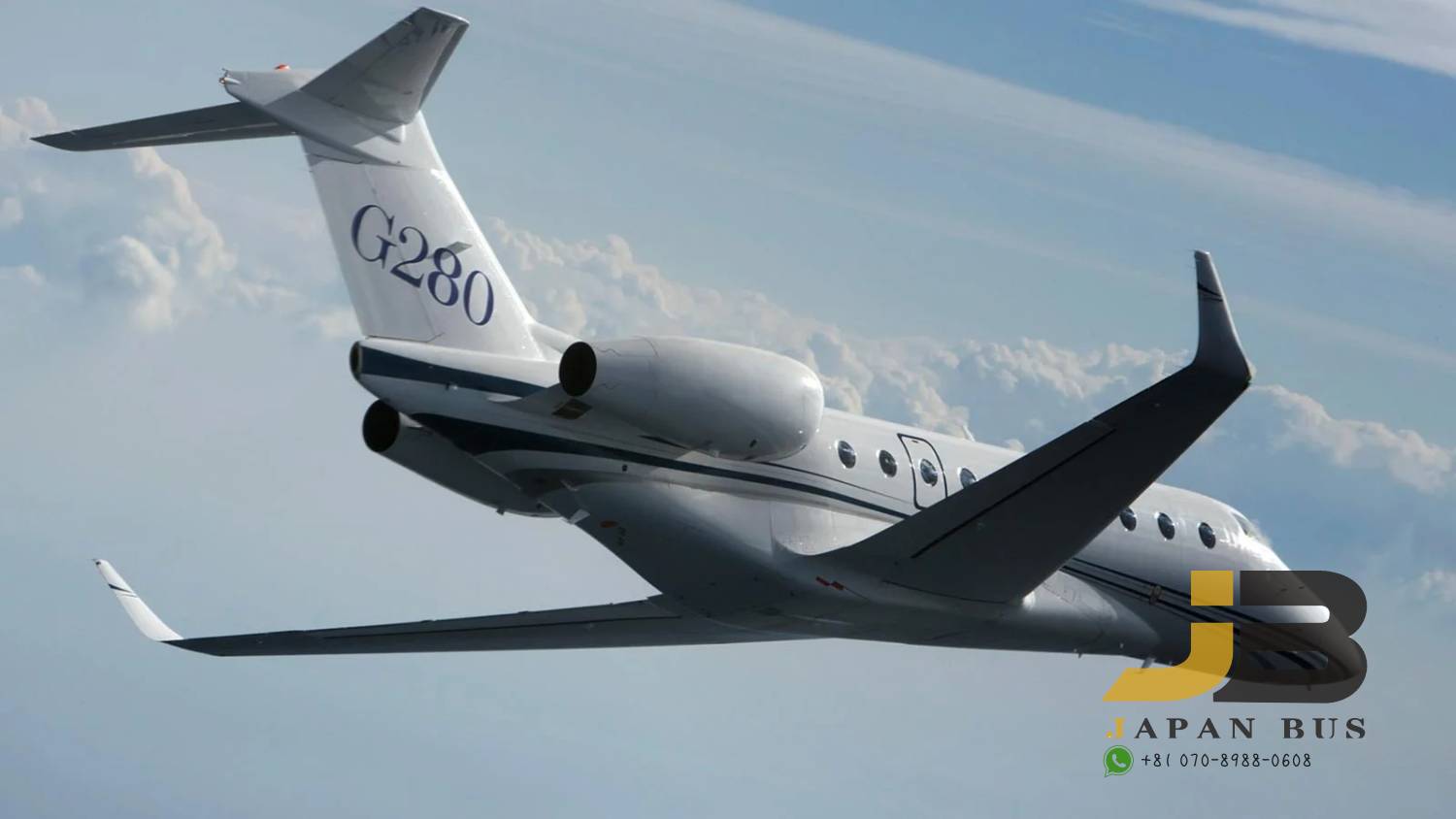


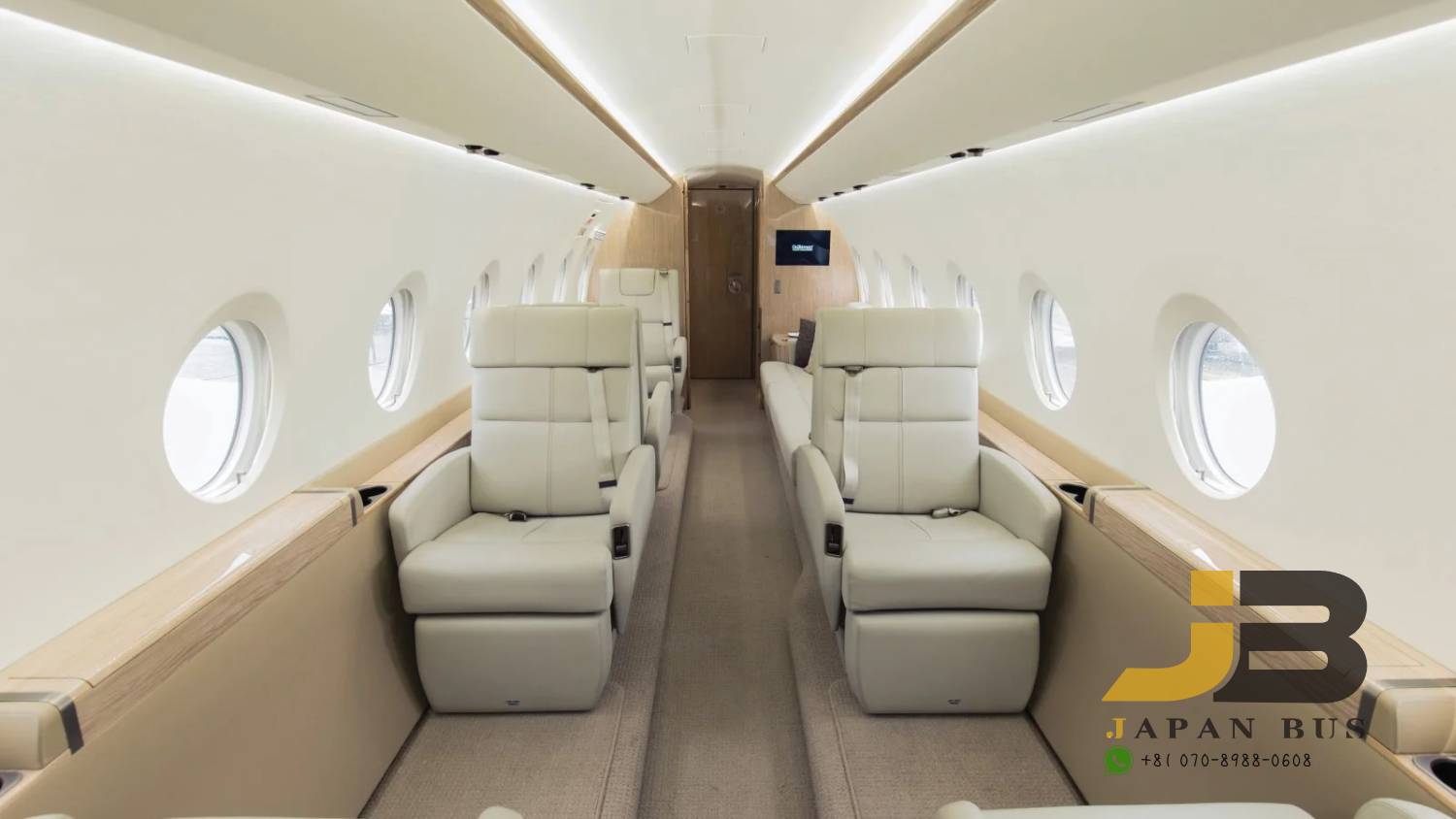
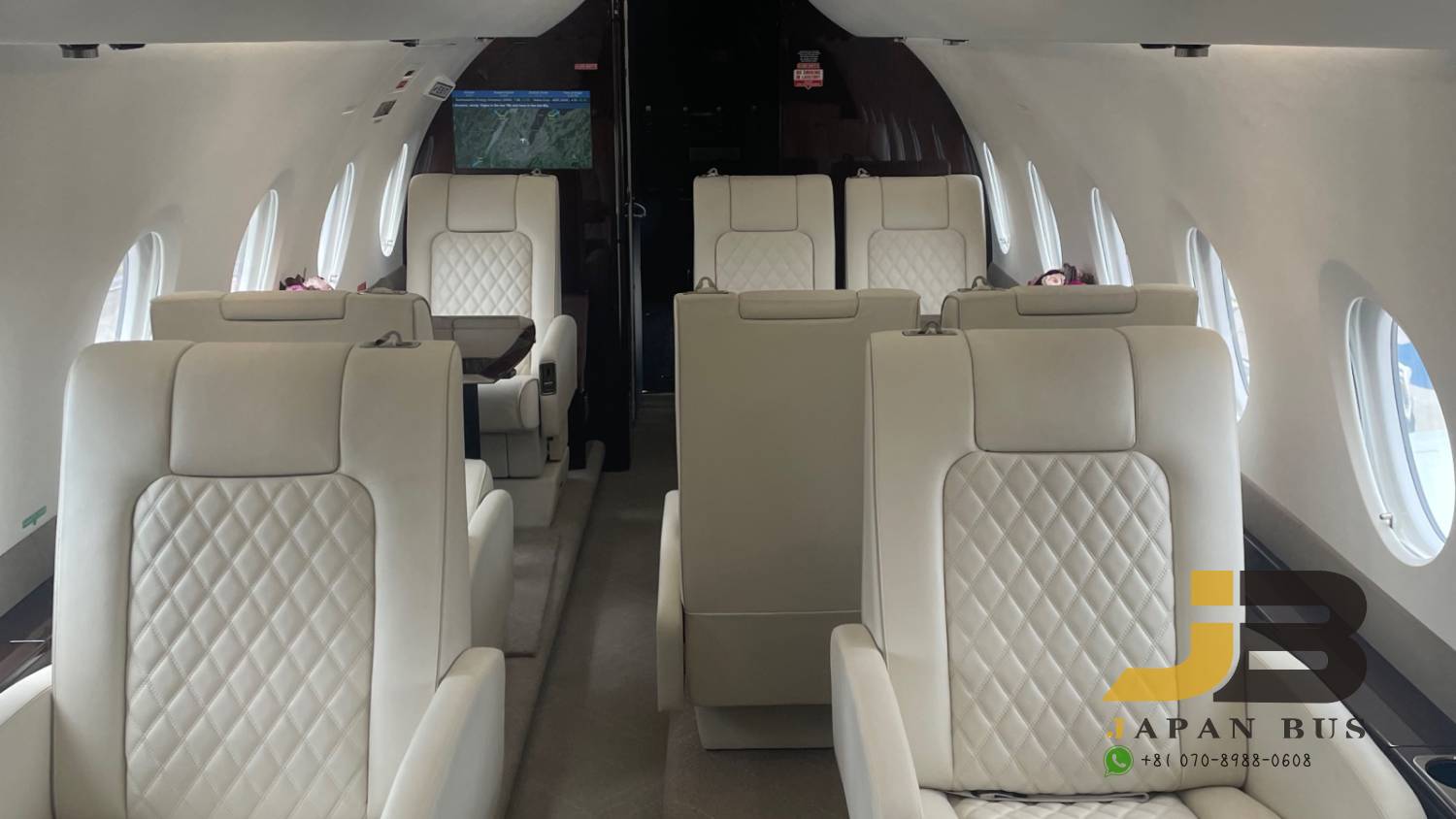
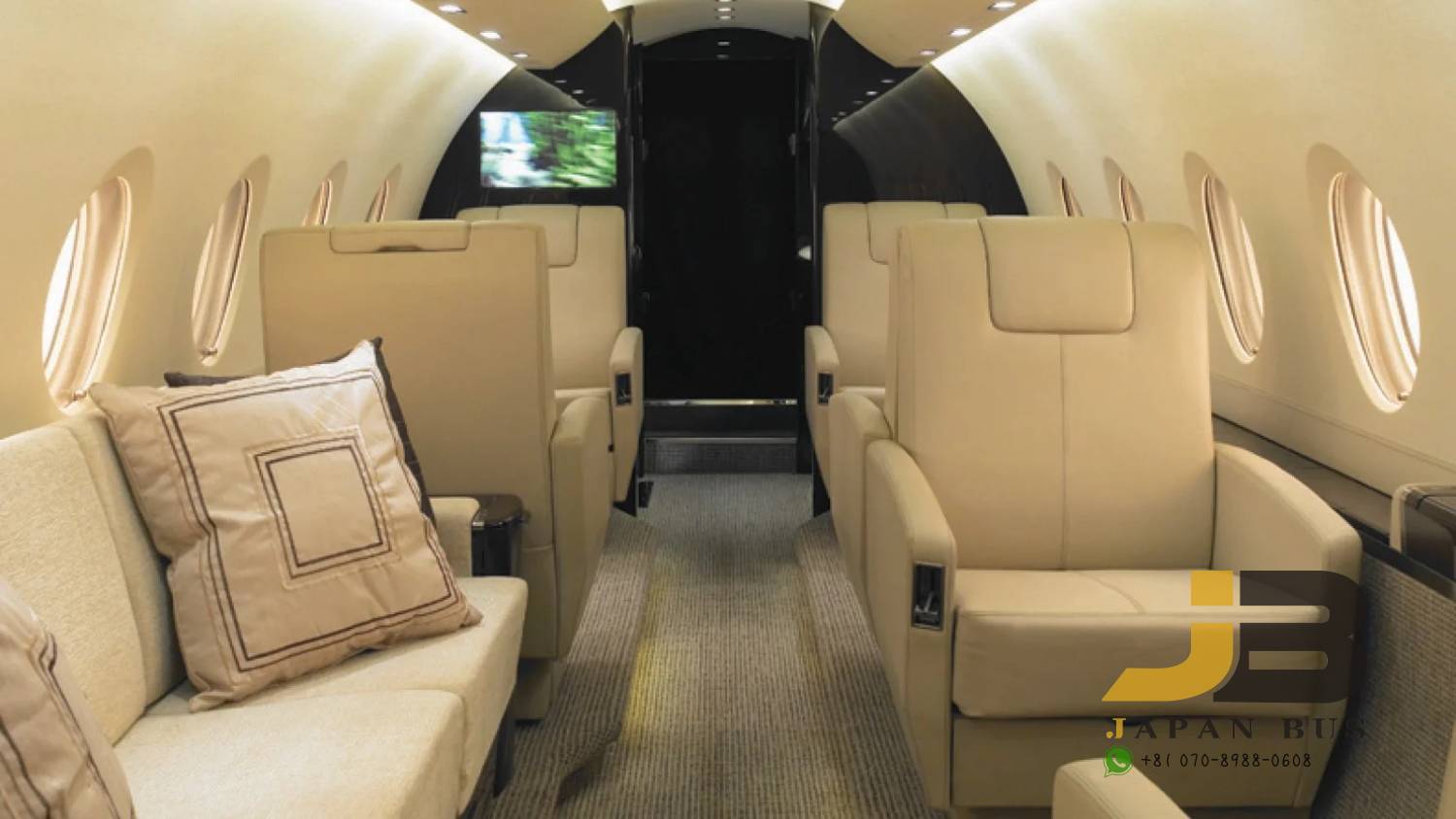
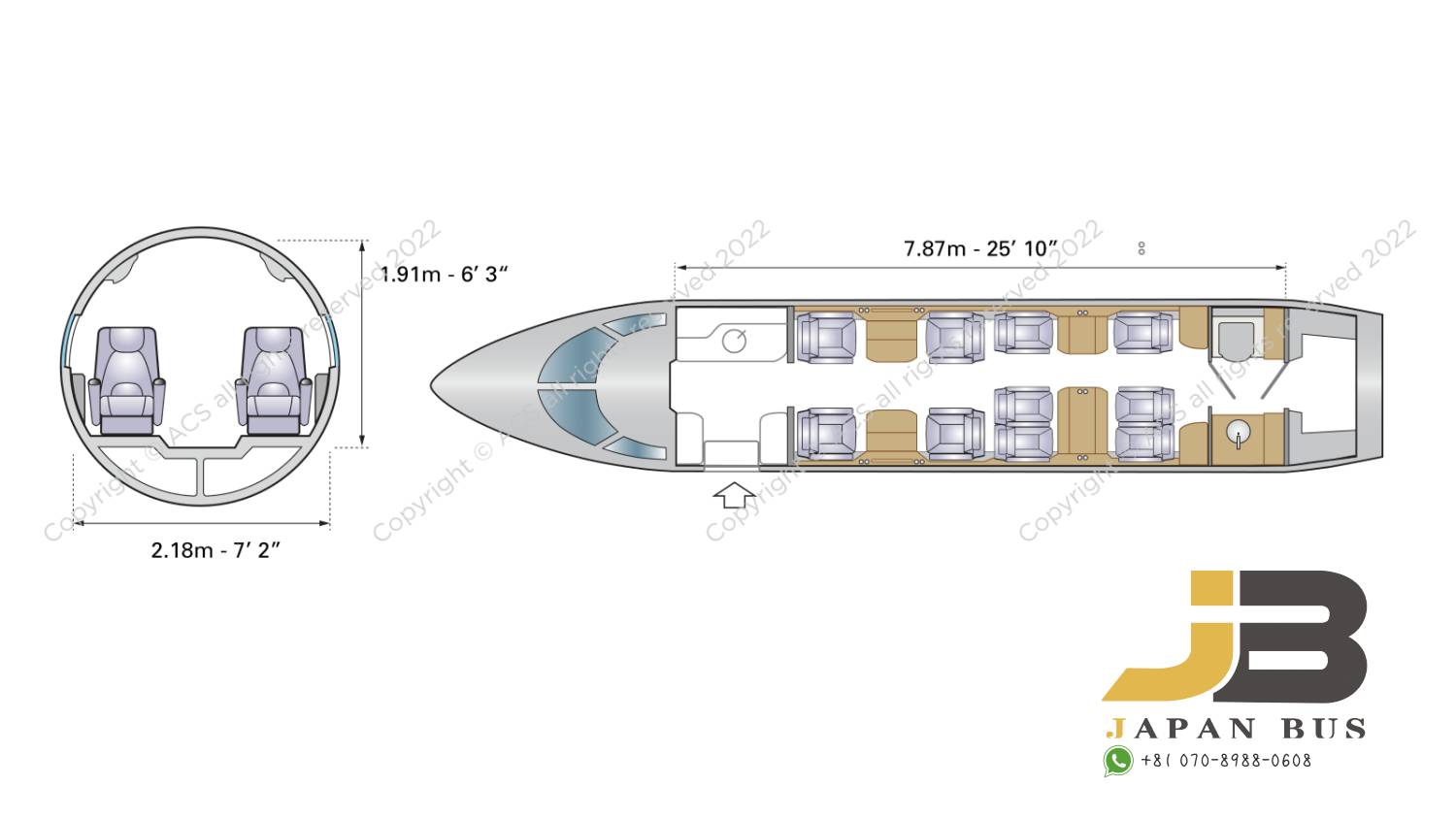
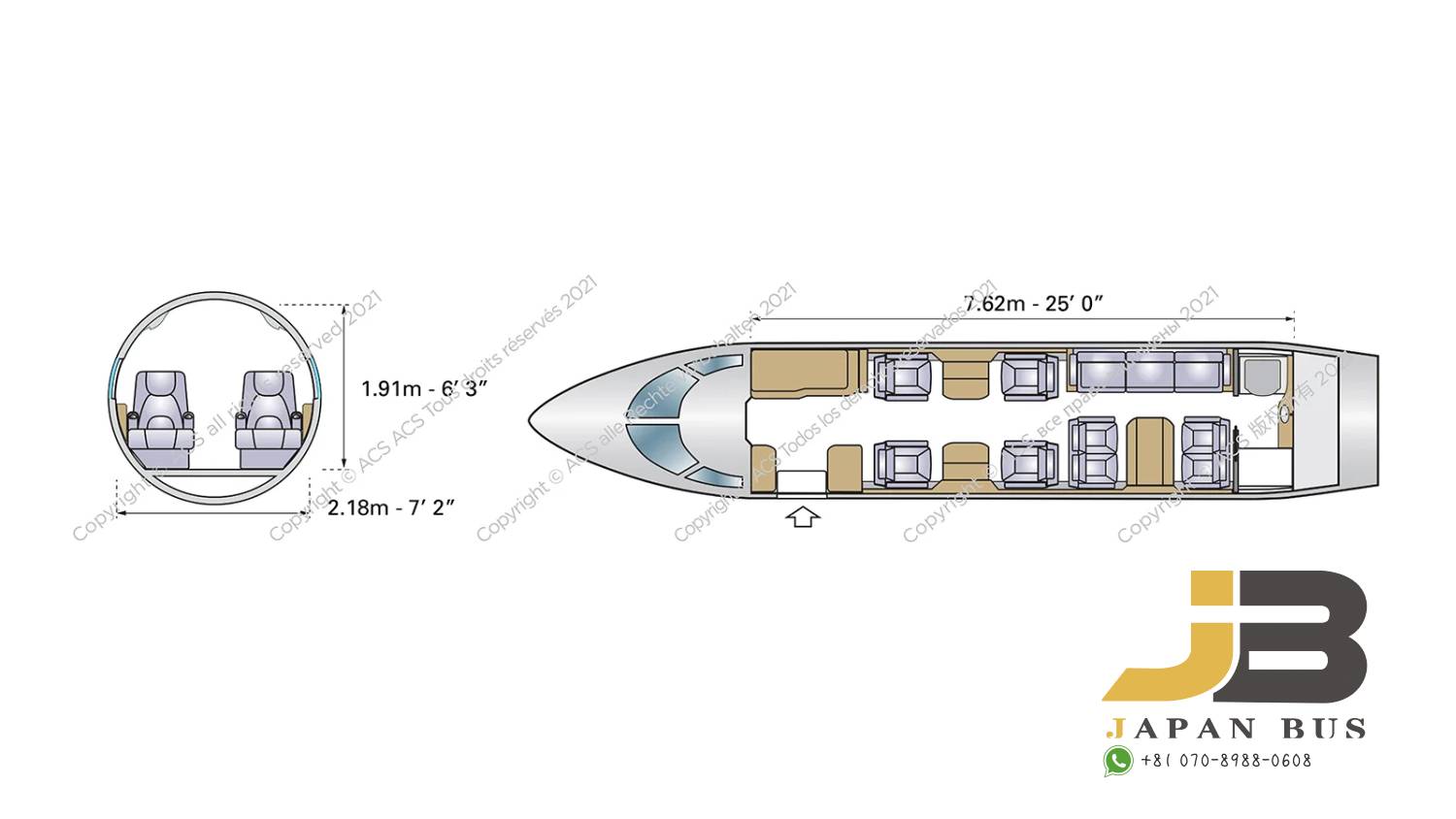
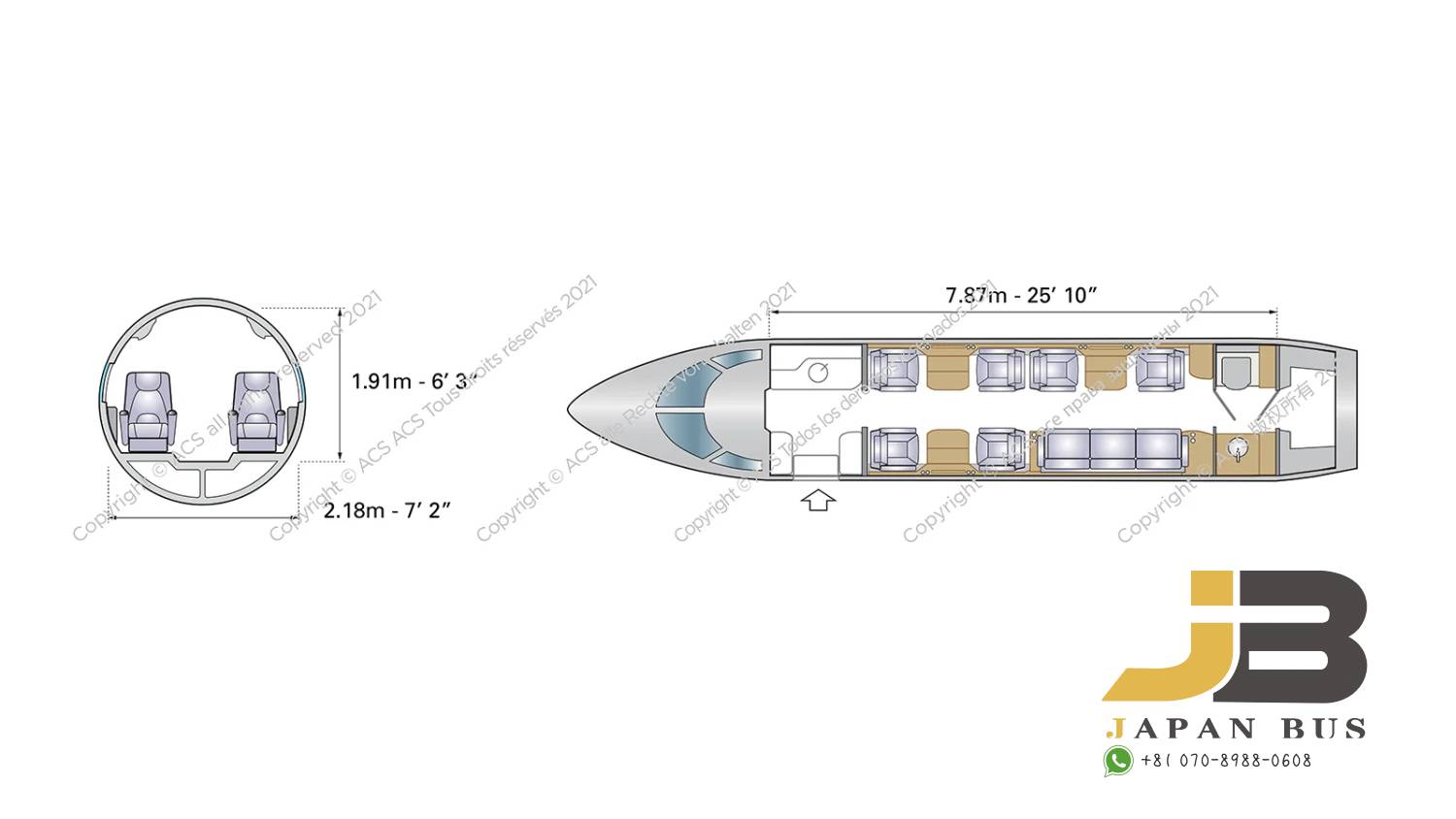
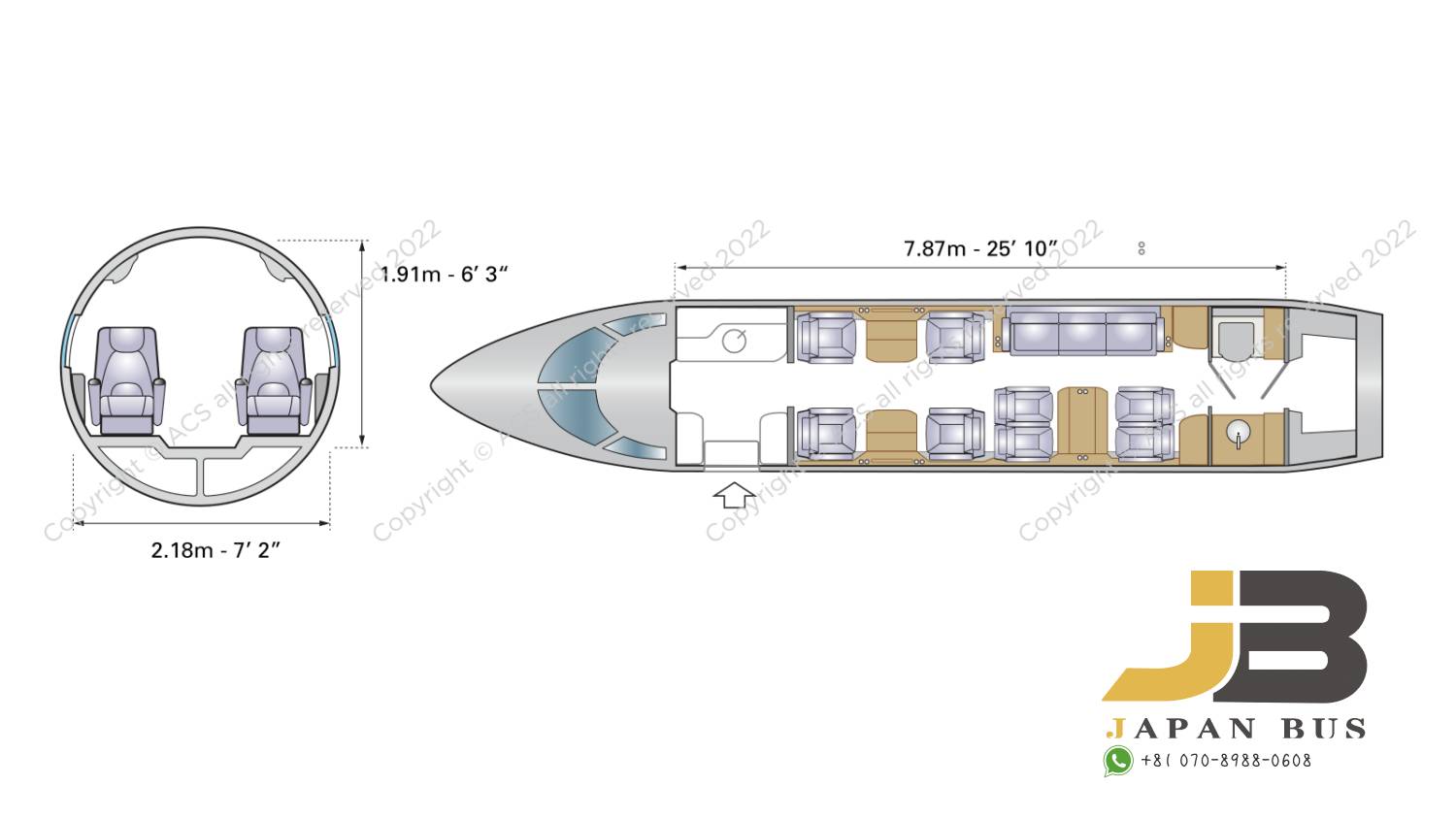
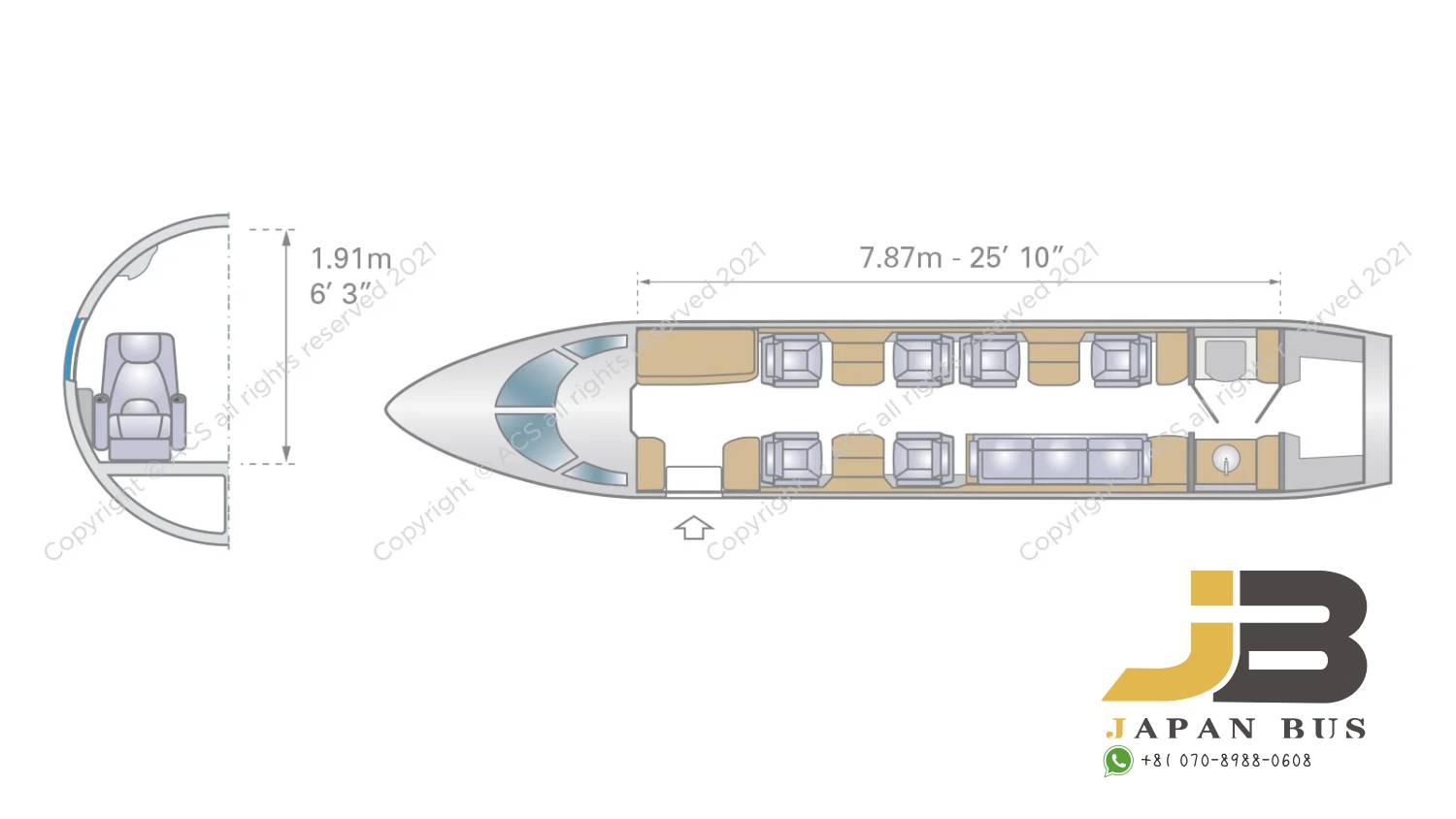
GULFSTREAM G280
介紹
GULFSTREAM G280
- Passengers 10
Following on from the successful Gulfstream G200, the upgraded G280 is a luxurious super-midsize jet that combines space and comfort, making it ideal for both short hops and long-range transcontinental flights.
About this aircraft
- In 2005, Gulfstream began designing a follow-on aircraft to the G200. The new model, known as the G250, was launched in 2008 and delivered in 2012. It was later renamed the G280, as this is a more amenable number sequence in certain cultures.
- The aircraft’s maximum range of 6,667 km means it can complete flights such as London to New York or Dubai to Singapore.
- The external baggage compartment can hold up to 10 suitcases.
The G280 builds on its predecessor’s success, adding an advanced glass cockpit, new engines, larger wings, heating leading edges, a longer cabin, a new T-tail and four additional windows to compete with the popular Bombardier Challenger 300 and Cessna Citation X.
Interior design
The G280’s cabin can seat up to 11 passengers (12 if the lavatory is used as a seat) in two seating areas, but most configurations are designed to comfortably seat eight or 10 people. Passengers have in-flight access to the 120 ft3 baggage compartment.
The spacious interior’s floor area is 17-35% larger than conventional jets, with a large galley and an enclosed lavatory at the rear. Nineteen panoramic windows let in plenty of natural light. There’s also a modern cabin management system on board.
Below are some typical configurations found on a Gulfstream G280.


Interesting facts to know before you fly
- Gulfstream’s signature cabin windows are particularly large with a sleek oval shape, flooding the cabin with light and positioned to give passengers a view of the world below from the comfort of their seats.
- The G280 is certified for steep approaches, meaning it can land at airports with short runways. It also makes nimble work of landing at and departing from high-altitude airports and low-visibility conditions.
- The G280’s combination of wing design and modern engine technology makes it extremely fuel-efficient, reducing the aircraft’s operational costs.
Technological features
The G280 is powered by two Honeywell HTF7250G turbofan engines, each producing a maximum thrust of 33 kilonewtons.
The flight deck features a Collins head-up display (HUD II), enhanced vision systems (EVS II) and synthetic vision (SV-PFD), allowing the pilots to view an infrared image of their surroundings even in poor visibility conditions.
The aircraft’s Rockwell Collins ProLine Fusion avionics suite includes cursor control devices, moving map displays, a standby multifunction controller, a flight management system, automatic descent mode, a dual auto-throttle system, Jeppesen charts and a universal graphical weather station.
History
The G280’s predecessor, the G200, was originally named the “Astra Galaxy”. It was designed in the late 1980s by Israel Aircraft Industries subsidiary Galaxy Aerospace, in a risk-sharing partnership with the Soviet aircraft design bureau Yakovlev OKB. The program was officially launched in 1993.
The Galaxy first flew on December 25, 1997. By December 1998 it had received certification from the US and Israel and deliveries began the following year. The aircraft was renamed the G200 after Gulfstream acquired Galaxy Aerospace in June 2001. Over the next 10 years, Gulfstream built 250 of the aircraft before ceasing production to focus on the G280.
Planning for the G280 had begun seven years earlier, as Gulfstream looked to upgrade the G200 to better compete with the Bombardier Challenger 300 and Cessna Citation X. The new aircraft was originally called the G250 and featured a new glass cockpit and engines, larger wings and heated leading edges. In July 2011, the company renamed the aircraft the G280 after learning the number 250 has negative connotations in Mandarin. Full certification from Israel and the US was received in September 2012.
Manufacturer
Gulfstream Aerospace Corporation is an American aircraft company based in Savannah, Georgia and a wholly-owned subsidiary of General Dynamics. The company originated in the late 1950s when Grumman Aircraft Engineering Co. developed a twin-turboprop business aircraft called the Grumman Gulfstream I (G-I) at its facilities in Bethpage, New York.
Gulfstream now designs, develops, manufactures, markets and services the latest business jets and has produced more than 2,000 aircraft since 1958.
Cost
A G280 can cost between $18 million and $24 million (USD) depending on production year.
Charter rates
Charter rates for the Gulfstream G280 can vary depending on the length of your journey and the airports you decide to fly in and out of.
Contact our team to book a private charter flight on the Gulfstream G280. For information on other private jets to charter, browse our list of available aircraft.
Wet lease rates
ACMI (Aircraft, Crew, Maintenance, Insurance) wet lease rates for the Gulfstream G280 can vary depending on the age of the aircraft, length of the lease term, the number of block hours being guaranteed and the average cycle ratio. Contact our team for more information.
Key Details
•Aircraft Type: Super Mid Size Jet
•Passengers: Up to 10
•Cruise Speed: 850 KM/H (528 MPH)
•Range: 6667 KM (4143 Miles)
Specifications:
•Luggage Space: 120 ft³
•Enclosed Lavatory: Yes
•Flight Attendant: Yes
•Pressurised Cabin: Yes
條款及細則
Terms and Conditions for Private Aircraft Charter
1.Cancellation and Refund Policy
Once the booking is confirmed, all orders are non-cancellable and non-refundable. Please ensure all travel arrangements are carefully reviewed before making a reservation.
2.Flight Schedule Changes
Requests to change flight times or destinations must be submitted at least 48 hours in advance and are subject to aircraft and crew availability. Changes may incur additional charges.
3.Flight Delays and Cancellations
In the event of delays or cancellations caused by weather, technical issues, or other force majeure events, we will make every effort to reschedule the flight but will not be liable for any additional costs or compensation.
4.Crew Arrangements
All flights are operated by professional crew members. Crew assignments are determined by the company and cannot be changed or adjusted based on passenger requests.
5.Baggage Restrictions
Each aircraft has specific baggage weight and size limits. Please confirm baggage requirements at the time of booking. Excess baggage may incur additional charges or be refused for transport.
6.Passenger Safety and Conduct
All passengers must comply with the instructions of the crew. The company reserves the right to refuse service to passengers who violate safety regulations or disrupt the experience of others.
7.Flight Time and Overtime Charges
If the flight exceeds the scheduled duration, additional charges may apply. These charges will be calculated based on the aircraft type and the length of the delay.
8.Force Majeure
In the event of natural disasters, political unrest, or other force majeure events that prevent the flight from operating as scheduled, we will make every effort to reschedule the flight but will not be responsible for additional costs or liabilities.

